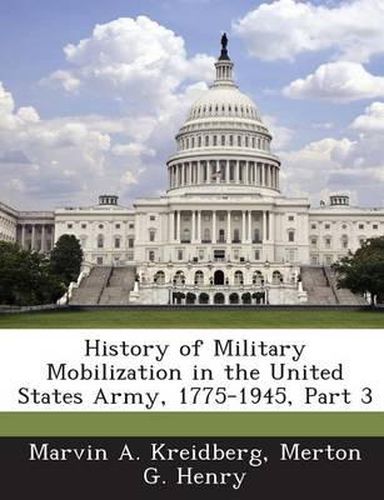Readings Newsletter
Become a Readings Member to make your shopping experience even easier.
Sign in or sign up for free!
You’re not far away from qualifying for FREE standard shipping within Australia
You’ve qualified for FREE standard shipping within Australia
The cart is loading…






This monograph is essentially a treatment of the manpower aspects of military mobilization. Its primary objective is to provide a more comprehensive record of military mobilizations in the United States for the use of General Staff officers and students in the Army school system and to assist the mobilization planners of the future. The manuscript is divided into four parts. Part I, \“Mobilization in an emerging world power,\” covers the period from the Revolutionary War through the Spanish-American War. Part II, \“World War I: preparations and mobilization,\” covers the period from 1900 through World War I. Part III, \“Mobilization activities between World Wars I and II,\” contains four chapters covering the planning agencies and plans developed between 1920 and 1940. Lastly, Part IV, \“World War II,\” contains six chapters on the actual mobilization for World War II.
$9.00 standard shipping within Australia
FREE standard shipping within Australia for orders over $100.00
Express & International shipping calculated at checkout
This monograph is essentially a treatment of the manpower aspects of military mobilization. Its primary objective is to provide a more comprehensive record of military mobilizations in the United States for the use of General Staff officers and students in the Army school system and to assist the mobilization planners of the future. The manuscript is divided into four parts. Part I, \“Mobilization in an emerging world power,\” covers the period from the Revolutionary War through the Spanish-American War. Part II, \“World War I: preparations and mobilization,\” covers the period from 1900 through World War I. Part III, \“Mobilization activities between World Wars I and II,\” contains four chapters covering the planning agencies and plans developed between 1920 and 1940. Lastly, Part IV, \“World War II,\” contains six chapters on the actual mobilization for World War II.